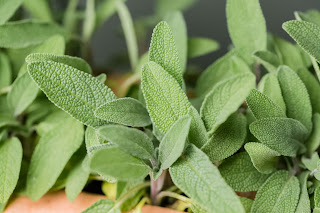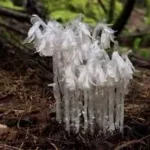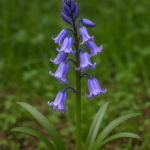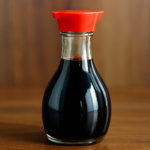
Sage herb belongs to the mint family. Sage (Salvia officinalis) is a perennial shrub about 2 feet tall and has more than 500 varieties. Its flowers are fragrant, usually purple or blue, sometimes white, red or pink. They are rich in nectar and their honey is in great demand in Europe because of its spicy taste. It prefers warm climate and dry soil.
More than 2 million ounces of sage are sold in the U.S. each year.
Sage has woody stem that can reach 2 feet in height.
During the 17th century, the Chinese exchanged three or four pounds of their tea with Dutch traders for one pound of European sage leaves.
Leaves are usually 2.5 inches long and 1 inch wide. They are oblong in shape and grayish to green in color.
Dried sage leaves are use to season meats, in baked goods and beverages.
Bottom side of leaves is whitish due to large number of fine hairs. Upper side of leaves is wrinkled.
Sage leaves are also used to flavor vermouth and various bitters.
Sage develops white, purple, pink or (more common) lavender-colored flowers. They contain both male (stamens) and female (pistil) reproductive organs. Flowers are pollinated by various types of insects (usually by honeybees).
Sage contains powerful anti-oxidants which slow spoilage.
People use sage as flavoring agent at least 2000 years. Sage has savory and peppery taste. It is often used with dishes made of beans, cheese, tomatoes and eggs.
Sage is also antibacterial in nature, is effective in treating sore throats and is even effective as an antiperspirant.
“Salvia” is Latin name for sage. Latin name is derived from a word “salvare” which means “to save”. Name indicates healing properties of this plant.
Sage was rubbed on the teeth to make them whiter in nineteenth-century America.
Leaves and flowers contain different types of compounds (chemically known as flavonoids, phenols and tannins) which exhibit anti-inflammatory, antibacterial, antifungal and antiseptic properties. Sage facilitates digestion and elimination of the excess water from the body (acts like diuretic). Tonics made of sage can improve growth of hair and they are often used in treatment of alopecia.
Sage is part of the mint family, alongside oregano, lavender, rosemary, thyme, and basil.
Sage can be used in the fresh form (by extracting juice directly from leaves) or in the form of tea, capsule, tinctures and mouthwashes.
There are more than 900 species of sage.
Sage has been used as meat preservative in the ancient Greece and Rome, because it possesses antibacterial properties.
Sage can be eaten whole or ground. Adding sage to a dish is a great way to enhance flavor without adding extra calories or salt.
Ancient Romans used sage for treatment of sore throat, bleeding wounds, snake bites, hot flushes and ulcers.
The herb often pairs well with poultry and pork.
Sage was also used as memory enhancer.
Sage is often used as a fragrance in soaps and cosmetics due to its pleasant aroma.
Sage is an important part of traditional Chinese medicine during the past couple of thousand years. This plant increases body strength, mental capacity and body heat.
Sage is considered a good rodent repellent.
Native American used sage leaves to treat sores on the skin and to heal swollen gums.
Sage plant is perennial and – if taken proper attention – can give a good yield for 6-10 years or even more.
Fresh leaves or juices squeezed from leaves can be used to soothe insect bites.
It is a deep-rooted plant and its root can reach or exceed 100 cm (39 inches).
Sage can stimulate appetite when it is used in combination with dandelion or artichoke.
Sage comes from the Mediterranean region, but -as a well-adapted plant- it has spread all over the world.
One species of sage, known as Salvia divinorum, exhibit strong psychoactive properties.
Sage (Salvia officinalis) was used by Romans in sacred ceremonies, as they believed that it can bring longevity.
Sage is perennial plant, which means that it can survive more than 2 years in the wild.








